Ever wished your furry friend would do their business in the great outdoors? Teaching your dog to pee outside is easier than you think. From establishing a routine to positive reinforcement, we’ve got you covered. In this article, we’ll share expert tips and tricks on “how to make the dog pee outside” like a pro. Stay tuned for simple yet effective methods that will have your pup wagging their tail with pride. Scroll down for reviews of our top picks!
Key Takeaways
- Establish a consistent routine
- Set specific times for bathroom breaks to help your dog develop a regular schedule.
- Use positive reinforcement
- Praise and reward your dog when they pee outside to encourage this desired behavior.
- Monitor water intake
- Keep track of when and how much your dog drinks to anticipate when they may need to go outside.
- Understand your dog’s signals
- Learn to recognize signs like sniffing or circling that indicate your dog needs to pee.
- Create a designated potty area
- Designate a specific spot outside where you want your dog to go to the bathroom consistently.
- Avoid punishing accidents
- Refrain from scolding your dog for accidents indoors as it can create anxiety and confusion.
1. Establish a consistent routine
Establishing consistency in your dog’s routine is crucial for successful potty training. By setting specific times for feeding, you can regulate your dog’s elimination schedule effectively. Take your puppy outside after waking up, playing, and eating to increase the chances of them peeing outside. Using a designated bathroom spot and a consistent command word will help reinforce the desired behavior.
- Feeding Schedule: Regulate elimination times by feeding at specific times.
- Outdoor Timing: Take the puppy out after waking up, playing, and meals.
- Designated Spot: Use a specific area for bathroom breaks.
- Command Word: Consistently use a command word during potty breaks.
Having a structured routine not only helps in training but also strengthens the bond between you and your furry friend. With time and patience, this routine will become second nature to your dog, leading to fewer accidents indoors and more successful outdoor peeing sessions.
2. Use positive reinforcement
- Positive reinforcement is a powerful tool in training dogs to pee outside.
- Reward your puppy immediately after they eliminate outdoors.
- Utilize treats or praise to reinforce good behavior.
- Make sure the puppy has finished before giving rewards.
Positive reinforcement not only helps in teaching desired behaviors, but also strengthens the bond between you and your furry friend. By associating peeing outside with rewards, you increase the likelihood of them repeating this behavior.
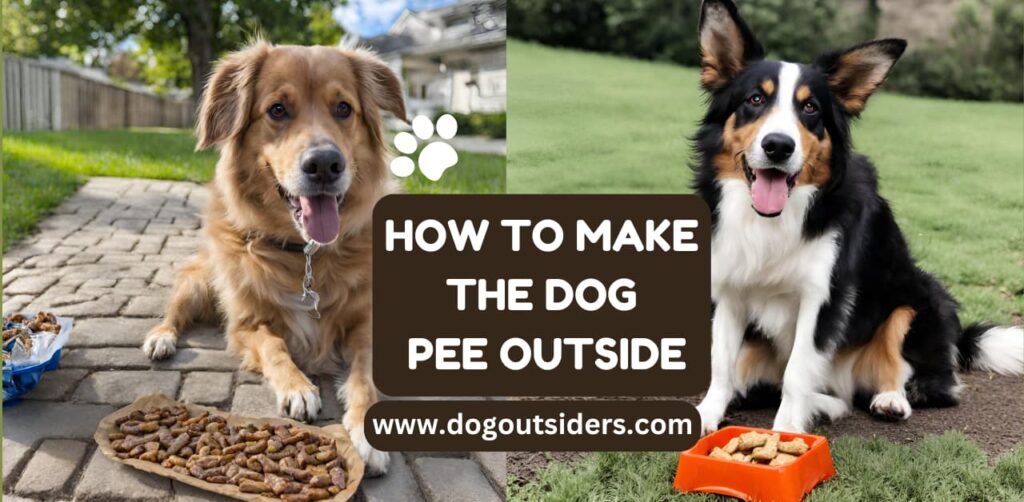
Consistency is key when using positive reinforcement. Over time, your dog will learn that eliminating outside leads to pleasant experiences like treats or playtime. This method can be particularly effective for puppies who are still learning proper bathroom etiquette.
Remember, patience is crucial when training your dog. Each pup learns at their own pace, so it’s important to stay consistent and positive throughout the process. With dedication and the right approach, you can effectively teach your dog to pee outside through positive reinforcement.
3. Monitor water intake
Controlling your dog’s water intake is crucial for managing bathroom breaks effectively. By regulating when and how much water your dog drinks, you can help in their potty training process. Here are some key points to consider:
- Remove the water dish before bedtime: This simple step can prevent nighttime accidents and encourage your dog to hold their bladder until morning.
- Control the puppy’s water intake: Monitoring how much water your puppy consumes allows you to predict when they will need to go outside.
- Offer water at specific times: By providing water at scheduled intervals, you can anticipate when your dog will likely need a bathroom break.
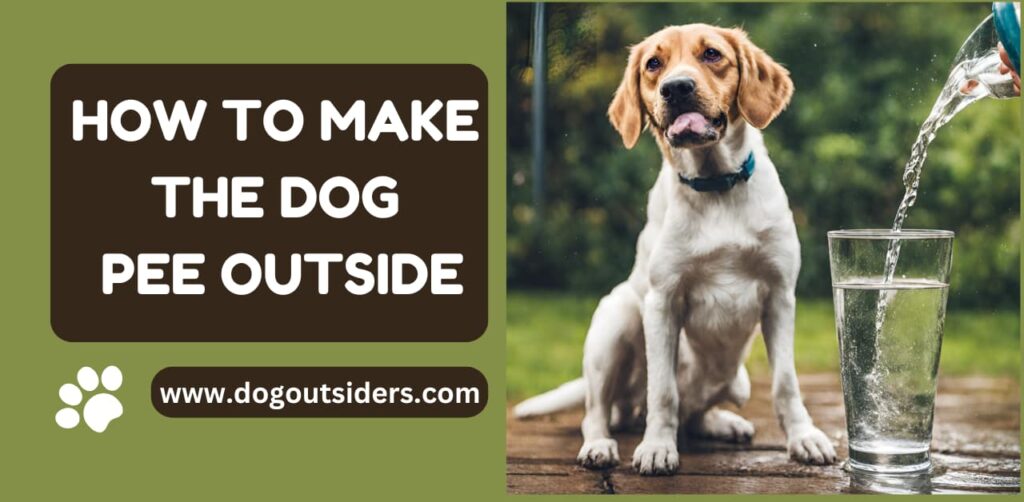
Monitoring your dog’s water consumption helps in creating a routine that aligns with their elimination needs. Remember, consistency is key in reinforcing good potty habits. By being mindful of when and how much water your dog drinks, you can set them up for success in learning to pee outside.
4. Understand your dog’s signals
Recognizing your dog’s signals is key to successful house training. Dogs often exhibit specific behaviors before eliminating, such as sniffing or circling. By paying attention to these cues, you can anticipate when your pup needs to go outside. Observing your puppy’s behavior closely before accidents happen helps in understanding their patterns and timing for potty breaks. Respond promptly to these signals to prevent indoor accidents and reinforce positive habits.
Tips for Understanding Your Dog’s Signals:
- Learn to recognize signs like sniffing or circling.
- Observe the puppy’s behavior before accidents happen.
- Respond promptly to signals to prevent indoor accidents.
Understanding these subtle signs can make a significant difference in successful potty training. By being attentive and responsive, you can effectively communicate with your furry friend and establish a routine that encourages outdoor elimination. Consistency and positive reinforcement play crucial roles in teaching your dog where it’s appropriate to relieve themselves.
5. Create a designated potty area
Establishing a designated potty area outside is key for successful potty training. Choose a specific spot in your yard where you want your dog to eliminate. By consistently taking your puppy to the same area on a leash, you are reinforcing the idea that this is the spot for bathroom breaks. This method helps in training your dog to associate that particular location with going potty.
Using consistent commands and rewards further reinforces this behavior. Employ short, clear commands like “Go potty” each time you take your dog to the designated area. When your dog successfully pees outside, immediately reward them with praise or treats. This positive reinforcement encourages them to continue using that spot.
Having a designated potty area not only makes it easier for your dog to understand where they should go but also helps in keeping other parts of your yard clean. It minimizes accidents inside the house and prevents urine from damaging carpets or floors.
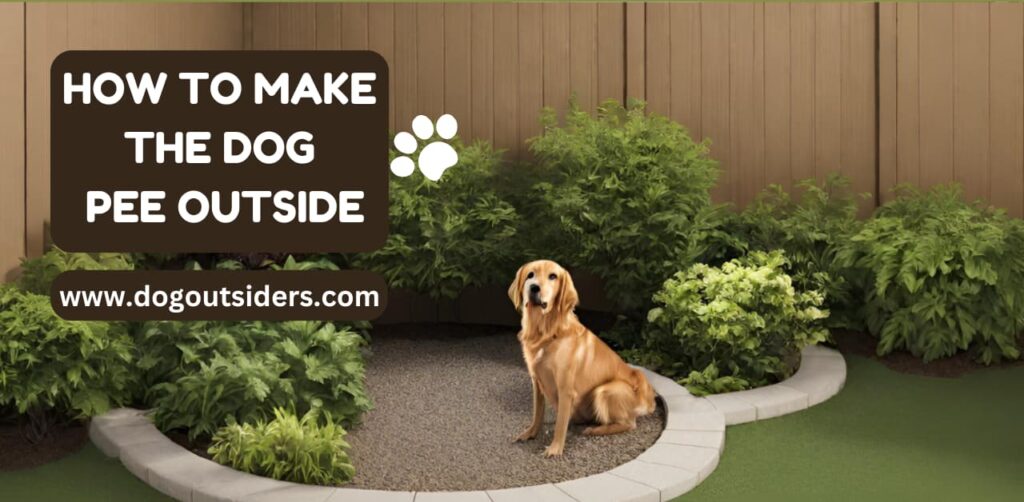
Remember, patience is key when potty training. Consistency and positive reinforcement go a long way in helping your furry friend learn the appropriate place to relieve themselves.
6. Avoid punishing accidents
When housebreaking your dog, it’s crucial to avoid scolding or punishing them for accidents. Positive reinforcement plays a key role in encouraging outdoor elimination habits. Understand that accidents are part of the learning process for your furry friend.
- Punishing accidents can lead to fear and anxiety in your dog.
- Positive reinforcement, such as treats and praise for going outside, helps reinforce good behavior.
- Dogs may not associate punishment with the accident but rather with you being upset.
Remember, consistency is essential in training your dog to pee outside. By focusing on positive methods and understanding that mishaps happen during the learning journey, you can create a supportive environment for your pet’s training progress.
7. Leash training for outdoor peeing
Leash training is a vital aspect of teaching your young puppy to pee outside. By using a leash, you can effectively guide your puppy to the designated potty area and establish good habits early on.
- Guidance: The leash provides control and guidance, ensuring that your puppy goes to the right spot for peeing.
- Consistency: Practicing walking the puppy to the designated area on a leash helps reinforce the behavior consistently.
- Routine: Incorporating leash training as part of the outdoor routine helps your puppy understand when and where it’s appropriate to relieve themselves.
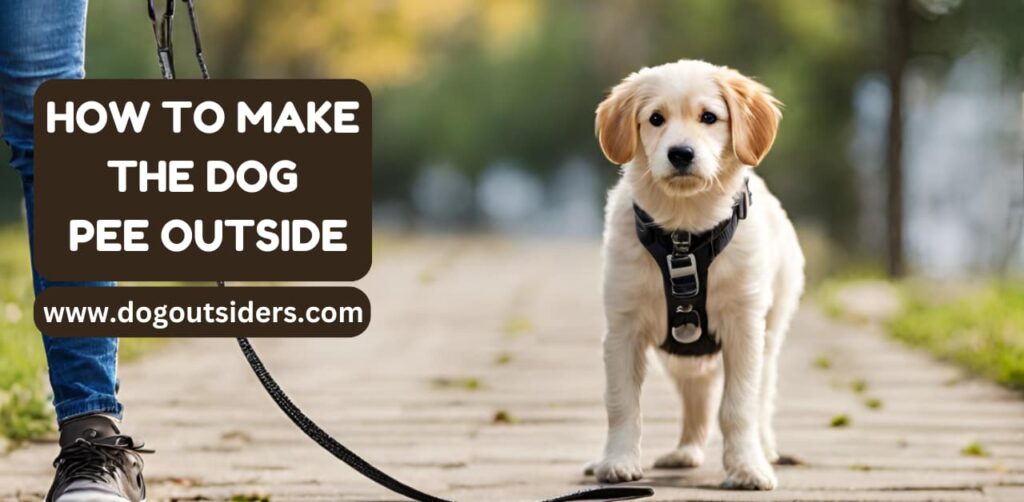
Leash training not only aids in house training but also strengthens the bond between you and your pet by fostering trust and communication during this crucial learning process.
8. Regular bathroom breaks
Establish a routine for taking your dog outside every two hours to avoid accidents. Consistent bathroom breaks help in training your pet effectively.
- Take the puppy out frequently to prevent bladder issues.
- A schedule ensures your furry friend gets ample opportunities to relieve themselves.
- Reinforce the habit by sticking to the same times daily.
Creating a structured plan for bathroom trips is crucial in teaching your dog where to go potty. By maintaining this schedule, you are setting clear expectations and helping your pet understand the appropriate behavior.
- Dogs, especially puppies, have smaller bladders that require more frequent outings.
- Consistency in timing reinforces the association between going outside and using the bathroom.
- Over time, this regularity helps in reducing accidents indoors significantly.
9. Clean up accidents properly
Using enzymatic cleaner is crucial in eliminating odors and preventing repeat accidents. These cleaners break down the components of pet urine, making it less likely for your dog to revisit the same spot.
Act swiftly when accidents happen to avoid reinforcing indoor elimination habits. By cleaning up promptly, you send a clear message to your puppy that indoors is not an appropriate bathroom area.
Proper disposal of waste is essential in discouraging your furry friend from returning to the scene of the accident. By removing all traces of odor and residue, you help prevent future incidents.
Key Points:
- Enzymatic cleaners are effective in removing odors and stains.
- Immediate cleanup helps in training your dog where to eliminate.
- Proper waste disposal aids in deterring repeat accidents.
Remember, consistency in using enzymatic cleaners, quick action after accidents, and proper waste disposal are fundamental steps towards successful potty training for your dog.
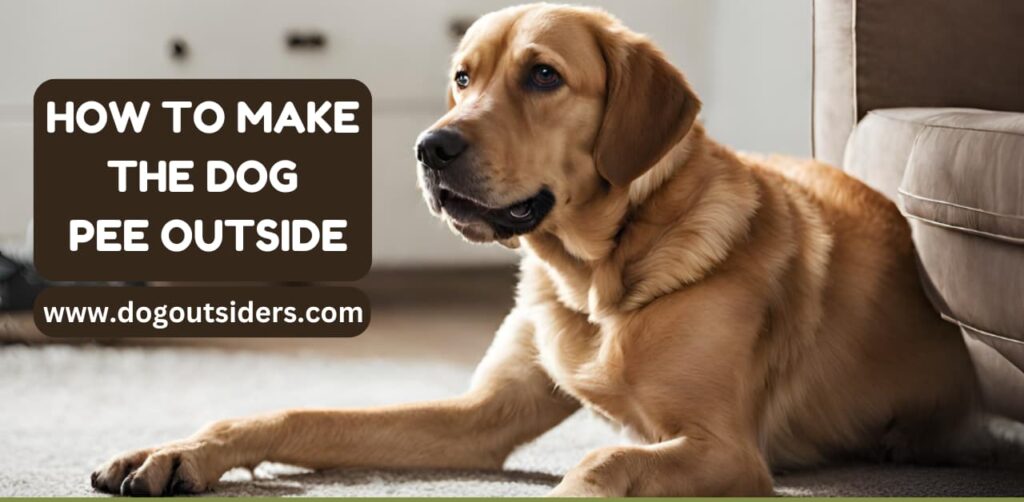
10. Seek professional help if needed
If the process of training your dog to pee outside seems challenging or if your furry friend is not responding to your cue, don’t hesitate to seek help from a professional. Professional trainers can provide tailored guidance and support for your specific situation.
Reaching out to a veterinarian is crucial if your puppy displays any unusual behavior while potty training. They can help determine if there are any underlying health issues causing difficulties in the process.
Professional assistance is also recommended for specialized training needs that may require expert intervention. These experts have the knowledge and experience to address unique challenges and provide effective solutions.
Remember, seeking help when needed shows your commitment to your dog’s well-being and ensures a smoother training process. Professionals can offer helpful insights and strategies that align with your dog’s individual needs, making the training journey more efficient and successful.
Conclusion:
After going through the various strategies for teaching your dog to pee outside, it’s clear that consistency and positive reinforcement are key. Understanding your furry friend’s needs and signals is fundamental in this process. By establishing a routine, creating a designated potty area, and avoiding punishment, you set the stage for successful outdoor peeing. Remember, accidents happen, so be patient and clean up properly.
In conclusion, training your dog to pee outside requires time, effort, and understanding. Stay committed to the process and seek professional help if needed. With dedication and the right approach, you and your pup can master this essential skill together!
FAQ’s:
Establishing a consistent routine is crucial as it helps your dog learn when and where to go. Dogs thrive on routine, making it easier for them to understand expectations and develop good habits.
Yes, positive reinforcement such as treats or praise is effective in encouraging desired behavior. It helps create a positive association with peeing outside, motivating your dog to repeat the behavior.
Monitoring water intake allows you to predict when your dog may need to go outside. By controlling water consumption, you can schedule bathroom breaks more effectively and reduce accidents indoors.
Choose a specific spot outdoors where you want your dog to pee consistently. Use verbal cues like “go potty” and take your dog to that area regularly. Over time, your dog will associate that spot with bathroom breaks.
Leash training can be beneficial as it helps control your dog’s movements during potty breaks. It prevents distractions and ensures your dog focuses on the task at hand, making outdoor peeing more efficient.

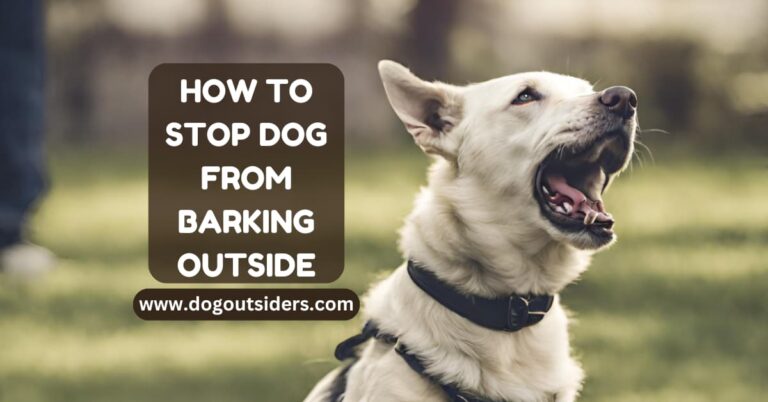
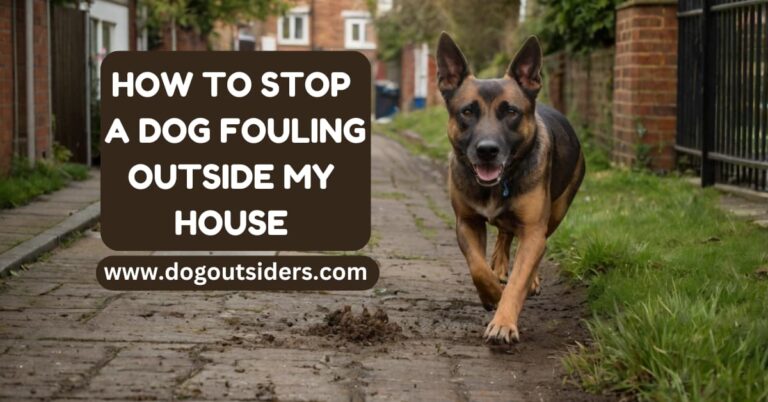
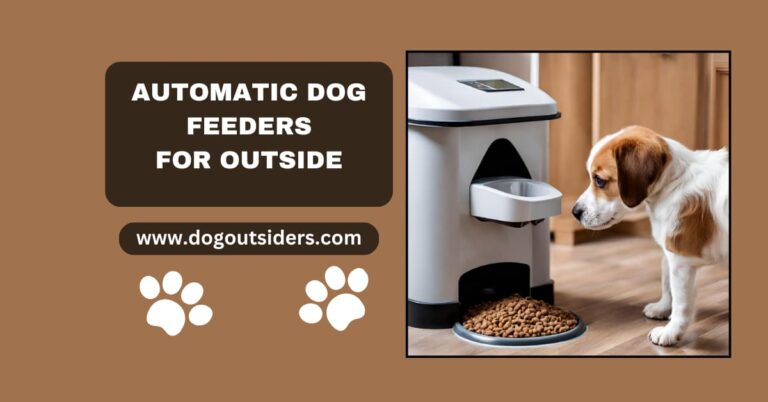

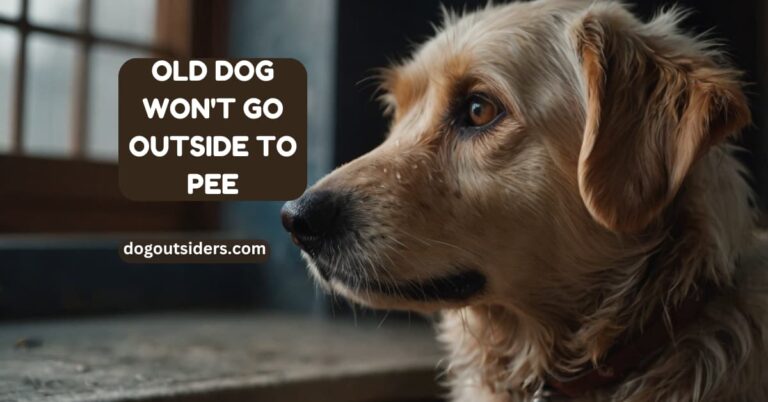
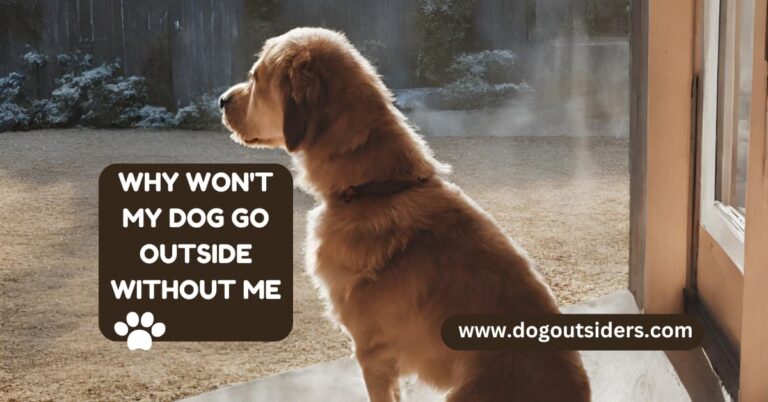
6 Comments